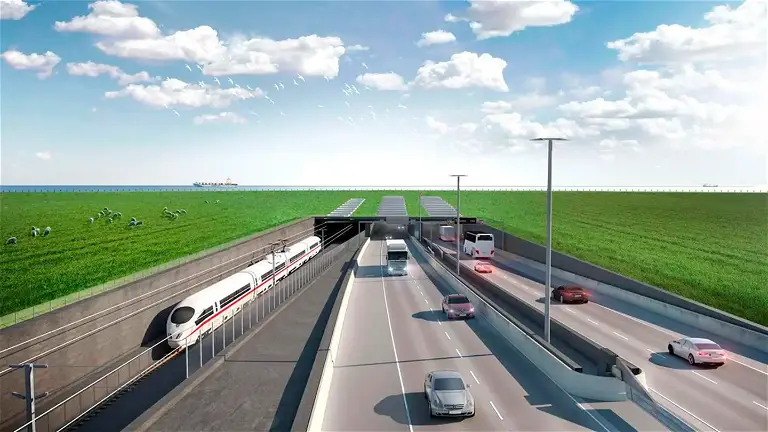
In the heart of Europe, an unprecedented engineering project is taking shape under the waters of the Baltic Sea. The Fehmarnbelt tunnel, currently under construction, aims to transform connectivity between Germany and Denmark, setting a new standard in submarine infrastructure and being the longest in the world to combine rail and car transport by road. Although there are longer simple tunnels, this is the longest composite tunnel in the world, in addition to reducing the transport times of users traveling to Denmark in a surprising way.
At the time we already saw really long tunnels such as the one in Japan that also claimed the title of being the longest tunnel in the world. However, this one is especially peculiar and draws attention for being surprising in its execution.
The world’s longest composite underwater tunnel
Led by an international consortium that includes Femern A/S, Rambøll, Arup and TEC – truly important companies in the infrastructure and public works market – it stretches over 18 kilometres, connecting Rødbyhavn in Denmark with Fehmarn in Germany. Once completed, the Fehmarnbelt will become the longest and deepest submerged tunnel in the world that houses both road and rail traffic.
The scale of the project is truly impressive. Construction requires 360,000 tons of rebar. The construction site on the Danish side covers an area equivalent to 373 football fields, and the process of dredging the seabed has moved approximately 12 million cubic meters of soil, according to New Atlas.
The tunnel is composed of 79 standard sections and 10 smaller special sections. Each standard section, weighing 73,000 tons, measures 217 meters long, 42 meters wide and 10 meters high. These huge structures are made on land and then submerged up to 40 meters deep into the seabed.
What is currently a 45-minute ferry ride will be reduced to a 7-minute train ride or 10-minute drive, making this route the shortest link between Scandinavia and the rest of Europe and the ideal connection that will allow the countries of this peninsula to achieve fast and efficient access to central Europe.
With a current budget of approximately $1.2 billion, the project is progressing quite clearly, something that is clear in the inauguration of the first section of the tunnel by Frederick X, the King of Denmark. The Fehmarnbelt tunnel is expected to be completed by 2029 and will have a service life of at least 120 years without revisions or further works. Modern engineering once again proves that it has exceeded all possible expectations, infrastructures have always been important and very large in the world, including the great Roman aqueducts, but now public works seem to reach dimensions that were previously unthinkable.

Comments